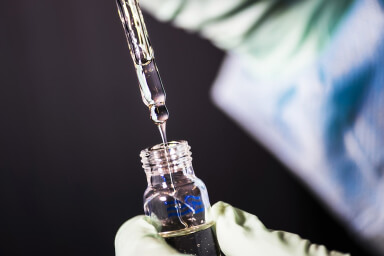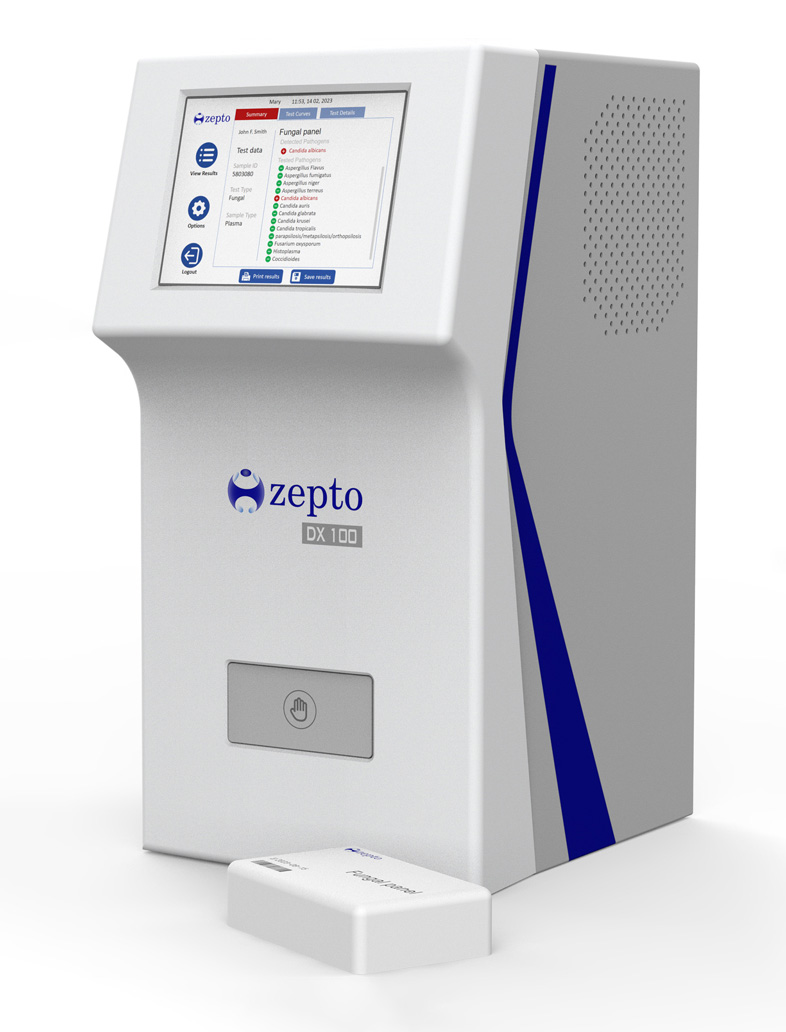Our Technology
Where Molecular Diagnostics meets Cutting Edge Lab-on-chip Technology
Zepto's Technology:
Unprecedented Turnaround Time w/ Pristine Sensitivity
Zepto utilizes Giant Magnetoresistance (GMR), a 2007 Nobel prize winning technological development to bring cutting edge diagnostic precision to the point of care.
*Not for sale in the U.S.
Sensitivity
Zepto's technology leverages GMR technology to achieve an astonishing molecular sensitivity of > 95%
Turnaround Time
Zepto's technology can achieve higher sensitivity with a turnaround time of
< 90 minutes
Multiplex
Zepto's innovations will allow for 36-plex uninterfered multiplex molecular detection

Invasive Fungal Infections in the U.S.
Zepto aims to disrupt current fungal diagnosis with a >99.5% sensitivity invasive fungal infection assay with results in less than 90min.
Every year, about 75,000 U.S. residents contract an invasive fungal infection (IFI). Globally, IFIs are responsible for an estimated 1.5 million deaths per year. In the U.S., 80% of antifungals are being misused due to ineffective and lengthy diagnostic tests. The current death rate from Fungal Infections is alarmingly high at around 35%-50%. This largely stems from the fact that current testing methods are both slow and lack sensitivity.
Turnaround Time
Blood cultures, the current diagnostic standard, takes anywhere from two to five days to return results.
Sensitivity
Blood culture IFI diagnostic testing only has a sensitivity of around 50%, nowhere near high enough to provide accurate results.
Issues With Commercial Fungal Tests:

Feature One

Feature Two

Feature One

Feature Two
Invasive Fungal Infections are one of the most prevalent and mistreated pathologies within the United States. Here are just some of the disturbing facts about patients suffering from IFIs in the U.S.
1WHO fungal priority pathogens list to guide research, development and public health
action.; 2022.
Zepto’s Invasive Fungal Infection (IFI) Diagnostic Solution
Giant Magneto Resistance (GMR) technology enabled comprehensive & highly multiplexed molecular test that identifies >95% of common invasive fungal pathogens in the U.S.

*This device has not been evaluated, cleared or approved for use by the FDA, and is not for sale in the U.S.
Our Advantages
GMR Technology
GMR technology offers more effective & efficient detection over traditional fluorescence methods
Lab-on-a-chip
Lab-on-a-chip technology allows for automated workflow with minimal manual requirements
Scalable
Modular & customizable design allows for scalability with future diagnostic applications
Highly Multiplexed
Proprietary GMR-based assay allows for 36-sensor array multiplexed target detection
Fast Turnaround
Zepto’s technology provides a turnaround time of < 90 minutes without foregoing quality
Highly Sensitive
GMR allows for higher signal to noise ratio compared to autofluorescence.
Highly Specific
High resolution melting differentiates non-specific bonding via thermal stress
GMR Technology
GMR technology offers more effective & efficient detection over traditional fluorescence methods
Lab-on-a-chip
Lab-on-a-chip technology allows for automated workflow with minimal manual requirements
Scalable
Modular & customizable design allows for scalability with future diagnostic applications
Highly Multiplexed
Proprietary GMR-based assay allows for 36-sensor array multiplexed target detection
Fast Turnaround
Zepto’s technology provides a turnaround time of < 90 minutes without foregoing quality
Highly Sensitive
GMR allows for higher signal to noise ratio compared to autofluorescence.
Highly Specific
High resolution melting differentiates non-specific bonding via thermal stress
Get In Touch
If you would like to learn more about our technology or would like to join our team, don’t be afraid to reach out! Zepto is always looking to incorporate promising new talent into our pool of dedicated & passionate innovators. Send us a message today!